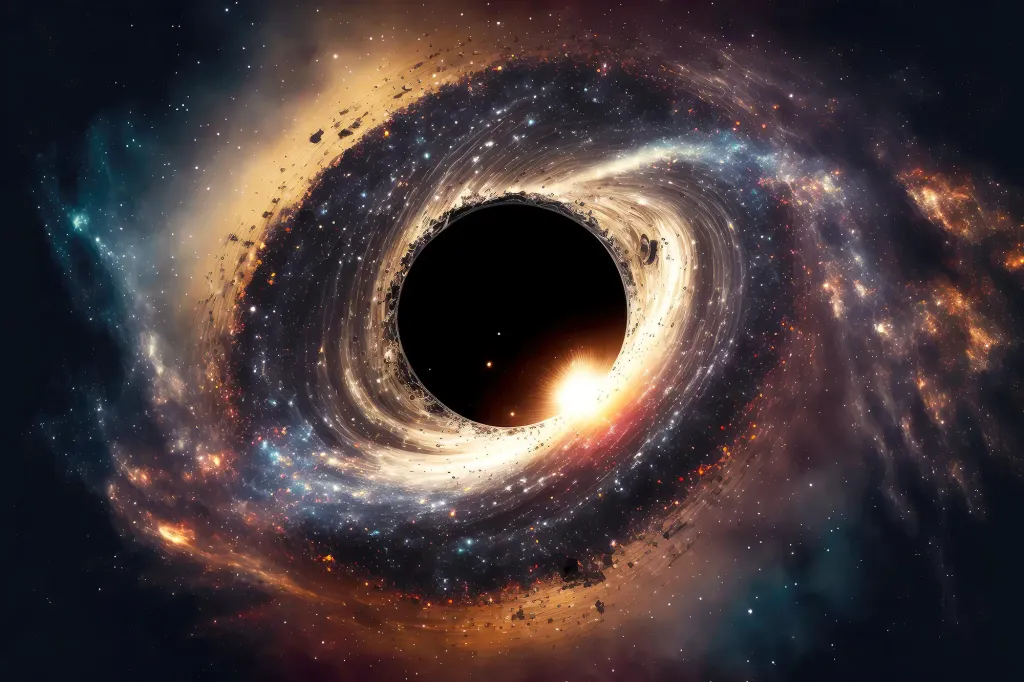Will the sun one day turn into a black hole?
- September 5, 2023
- 0
After about 5 billion years, the Sun will reach the end of its life with nuclear fuel and will no longer be able to support itself against its
After about 5 billion years, the Sun will reach the end of its life with nuclear fuel and will no longer be able to support itself against its

After about 5 billion years, the Sun will reach the end of its life with nuclear fuel and will no longer be able to support itself against its own gravity. The outer layers of our star will shatter (perhaps destroying Earth in the process), while the core will collapse into an incredibly dense state, leaving behind a stellar remnant.
If the gravitational collapse of the stellar core is complete, the stellar remnant will become a black hole, a region of space and time with such a strong gravitational pull that not even light can escape its grip.
So when the sun dies, will it become a black hole?
In short, no, the Sun does not have the necessary properties to turn into a black hole.
“It’s very simple: The sun is not heavy enough to turn into a black hole,” Xavier Calmet, a black hole expert and professor of physics at the University of Sussex in the United Kingdom, told Live Science via email.
Whether a star can become a black hole is influenced by many conditions, including its composition, rotation and the processes that drive its evolution, but the main requirement is the right amount of mass, Calmet said.
“Stars with an initial mass of 20 to 25 times the mass of our Sun can undergo the gravitational collapse necessary to form black holes,” said Calmet.
This threshold, known as the Tolman-Oppenheimer-Volkov limit, was first calculated by J. Robert Oppenheimer and colleagues. Currently, scientists believe that a dying star must leave a stellar coreapproximately Two to three times the mass of the Sun to form a black hole. So theoretically, if the Sun were twice its current mass, it would have a chance to turn into a black hole, right?
When the nuclear fuel in a star’s core runs out, the nuclear fusion of hydrogen into helium still continues in its outer layers. That is, when the core collapses, the outer layers expand away from the star and the star enters the red giant phase.
When the Sun becomes a red giant in about 6 billion years (one billion years after the hydrogen in its core runs out), it will expand into the orbit of Mars and possibly swallow the inner planets, including Earth. The red giant’s outer layers will eventually cool and expand, forming a planetary nebula around the smoldering core of the Sun.
Massive stars that form black holes go through several such periods of collapse and expansion, each time losing more mass. This is because under the high pressures and temperatures of such heavy bodies, stars can fuse heavier elements. This continues until the star’s core is composed of iron, the heaviest element a star can make, and the star loses even more mass and turns into a supernova.
According to NASA, typical stellar-mass black holes (the smallest type observed by astronomers) are thirty times larger than the Sun, but can have as much mass as the Sun. A supermassive stellar-mass black hole doesn’t start out that way; it gets heavier, feeding on nearby gas and dust, and even on the bodies of its companion star if it once belonged to the binary system.
But the Sun will never reach the fusion stage. Instead, Calmet said, the Sun will turn into a white dwarf, a dense Earth-size star. So Earth will never experience the thrill and horror of being swallowed by a black hole… unless the entire universe is already inside a black hole.
Source: Port Altele
As an experienced journalist and author, Mary has been reporting on the latest news and trends for over 5 years. With a passion for uncovering the stories behind the headlines, Mary has earned a reputation as a trusted voice in the world of journalism. Her writing style is insightful, engaging and thought-provoking, as she takes a deep dive into the most pressing issues of our time.